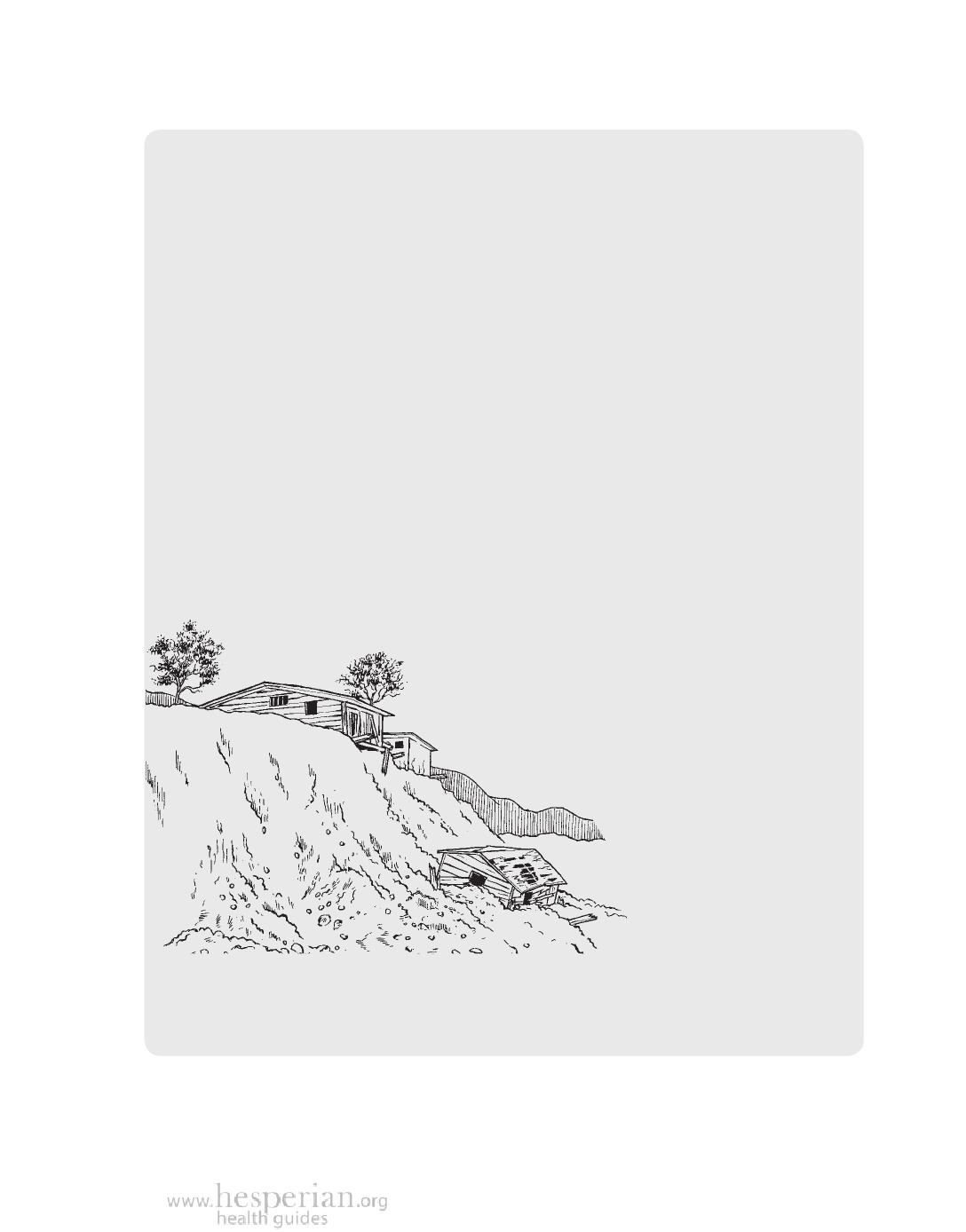
How Watersheds Work 159
Watershed damage in the Aguan River Valley
40 years ago the hills above the Aguan River were forested. The valley was one
of the most fertile regions in all of Honduras, and provided a good livelihood
for people in many villages and farms. Many small, clear streams flowed down
from the hills into the blue Aguan River. The river flowed through the heart of
the valley and into the Caribbean Sea.
Then people started cutting down trees to use more land for farming and
cattle grazing. Big fruit companies came in and cut down more trees to make
banana plantations. Families started moving into the hills because the best
valley land had been taken by rich landowners. Finally, most of the trees were
cut down and there were many more people living on the hillsides. There was
less water in the river and streams, and the water was no longer clear.
The people of the Aguan Valley knew things had changed, but it took a
hurricane to make them understand how much their watershed had been
damaged. Heavy rains caused landslides in the hills. Many homes and entire
villages were washed away. Many people died and many more became ill.
As they worked together to recover from the storm, people began to see
that the loss of trees on the hillsides, the landslides, and their health
problems were all related. Cattle polluted their drinking water,
causing diarrhea and other illness in their children.
Harvests got worse. Because the soil no longer
held water from the rainy season, the fields
dried out quickly. Then when the winter rain
came, it washed the soil away. Harvests
were so poor that people were always
hungry, and hunger made their
health problems worse.
The villagers began
to understand that to
improve their health,
they had to protect
their watershed.
After the discussion of the “Health effects of damaged watersheds,”
the Aguan River Valley story continues on page 163.
A Community Guide to Environmental Health 2012